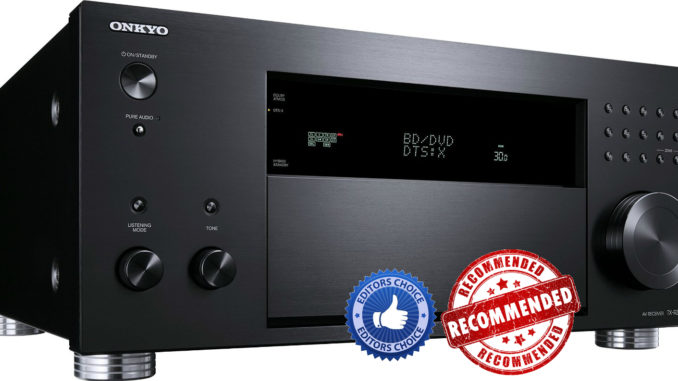
Having kept more or less the same look and feel for several years now, Onkyo finally decided to step up their game in 2015. If the TX-NR545 we reviewed a while ago was an indication of what to come with the new generation of receivers, we couldn´t be more excited to see what the TX-RZ800 and TX-RZ900 mid/high-end receivers could do. Here we check out the successor to the TX-NR838, the TX-RZ800 – a THX Select2 Plus certified 7-channel surround receiver with support for DTS:X and Dolby Atmos up to 5.1.2 channels.
Onkyo TX-RZ800
-
Sound Quality - 96%96%
-
Features - 90%90%
-
Ease of Use - 89%89%
-
Build Quality - 95%95%
SUMMARY
The TX-RZ800 is one of the references in the mid-range price segment. Well done, Onkyo!
Improved sound quality for both movies and music.
Excellent Network and Multimedia support.
Limited AccuEQ.
Simple User Interface
Design and Build Quality
This generation Onkyo introduces a number of changes compared to the previous one; a new chassis, a reworked architecture, and - maybe the most interesting - a completely new pre-amp section.
Onkyo have been using the same chassis and design for the last three years, and the new one used for the TX-RZ line is a move in the right direction if you ask us. The biggest change, at least aesthetically, is the front panel that has been totally revamped and, apart from the visible control buttons and knobs, now incorporates a large LCD display and a flap that covers even more control buttons. Onkyo has done a good job of maximizing the use of the front panel in regard to controls and visual appeal, and minimized most of the unnecessary empty space on the front. This may also be one of the reasons why the TX-RZ800 is only slightly bigger (17 1/8 " x 7 15/16" x 17 1/16" (435 x 201.5 x 433.5 mm)), yet heavier (39.7 lbs. (18 kg)) compared to the TX-NR838 (17 1/8" x 7 13/16" x 15 3/4" (435 x 198.5 x 400 mm), 34.2 lbs (15.5 kg)).
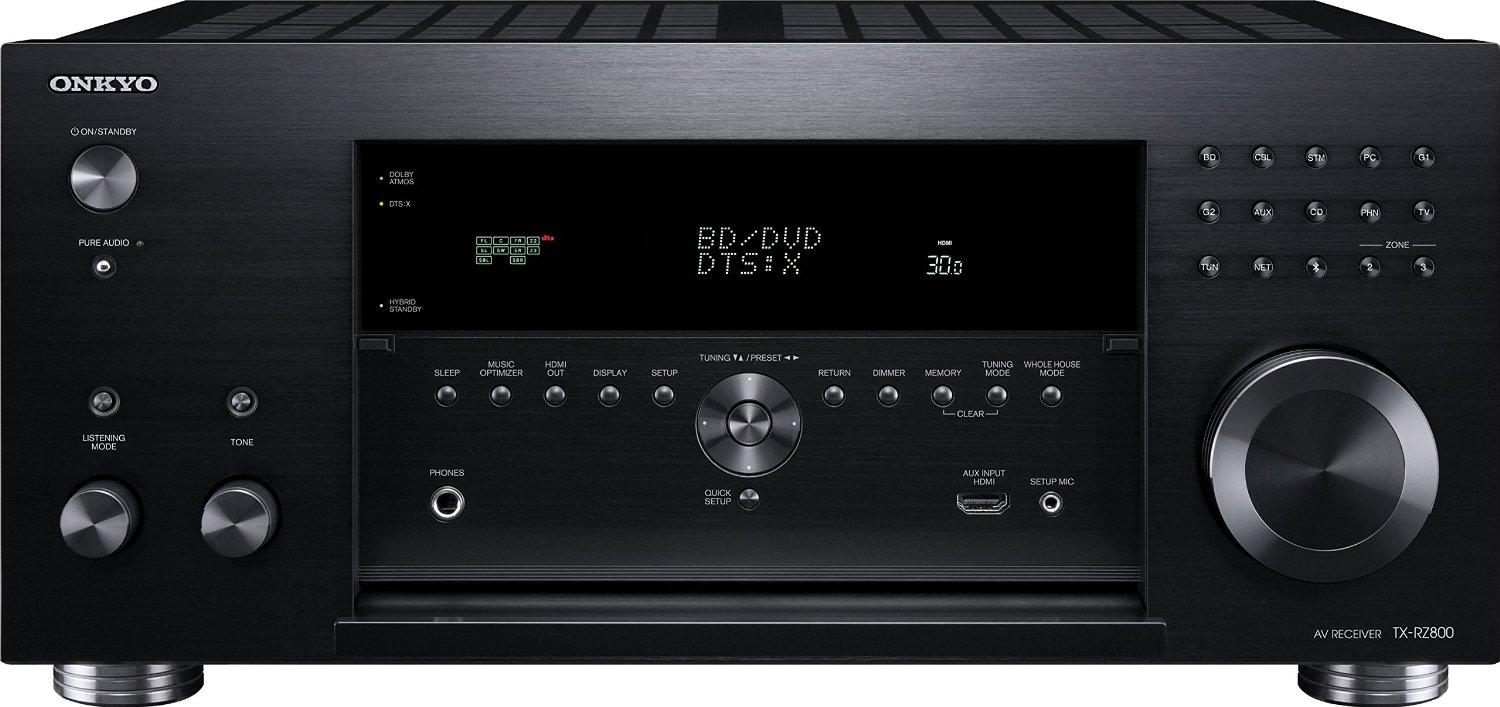
In addition to the master volume knob, we see the addition of two knobs on the lower left used to adjust the tone (high / low) and toggle between listening modes, while all the dedicated buttons for the source inputs, bluetooth and Zone 2 and 3 are now placed in a cluster on the right side above the volume knob.
The TX-RZ800 may be new, but it still utilizes technology that´s been used by Onkyo for quite some time; WRAT (Wide Range Amplifier Technology), H.C.P.S. (High Current Power Supply), 3-stage Inverted Darlington Circuitry, VLSC (Vector Linear Shaping Circuitry, PLL (Phase Locked Loop) jitter-cleaning on the S / PDIF inputs, Cirrus Logic 32-bit DSP (CS49844A), an so on. Onkyo has made some alterations to the amplification section, improving the low end, but the most interesting changes have been made in the preamp section.
Onkyo has been using Texas Instrument digital-to-analog converters, a popular choice of many major AV manufacturers, for well over a decade, but with this generation they´ve opted for the AK4458 384kHz / 32-bit Hi-Grade DAC from Asahi Kasei. This is the same DAC used in the entry-level TX-NR545 with good results. One last thing worth noting regarding the amp section is the (minor) increase in power output, from 130W to 135W (2 channels @ 8 ohms) compared to the TX-NR838.
When it comes to connectivity, the TX-RZ800 offers 8 HDMI Inputs (1 Front/7 Rear), Main, and Zone 2 Outputs, Mass Storage Class USB Memory Playback Capability, Component Video Switching (2 Input and 1 Output), 3 Composite Video Inputs (3 Rear) and 1 Output, 5 Digital Audio Inputs (3 Optical and 2 Coaxial), 9 Analog Audio Inputs (9 Rear), Phono Input (MM) for Turntable Connection, IR Input, 12 V Trigger Out (Assignable), and RS232 Port and 2 Parallel Subwoofer Pre-Outs. In other words; if you feel like you need more in- and outputs, you may suffer from some sort of condition or illness.

Remote Control
The remote control is the same you´ve been getting with Onkyo's amplifiers for the last few years, and although it is user-friendly, functional and practical, it would have been nice to see a new design to go along with the new design of the amp. Just a suggestion.
User Interface
Besides the main OSD that allows access to all the amplifier settings, we find a secondary menu opening as a pop-up window, allowing quick access to some of the secondary settings and features. The most useful functions are available, and if you´ve been using an Onkyo amp before you´ll feel right at home. However, the design of the interface is a bit too simple.
Audio Setup and Calibration
TX-RZ800 utilizes Onkyo's own AccuEQ Room Calibration, now in its second generation. Compared to previous version, Onkyo has implemented a few changes, and it is worth noting that AccuEQ 2.0 takes more time to execute the measurements, using more test tones for each speaker to refine the results. The TX-NR838 lacked equalization on the front and the subwoofer channel, but this has now been rectified.
Onkyo does fortunately leave it up to the user whether to apply any equalization on the front channels or not. Equalization on the front channels can be a good thing depending on circumstances, but it may also induce a noticeable coloration depending on the quality of the preamplifier. It may not necessarily be a major problem when watching movies, but this type of coloration should preferably be avoided when listening to music.
The end result of the calibration was similar to the results we got with the TX-NR545, although the microphone position was different this time, thus giving a slightly different EQ setting and, again, a too high cross-over setting for the subwoofer. Fortunately, the TX-RZ800 has the added bonus of an adjustable equalizer in increments of 1dB, although limited to a 7-band EQ from 25 Hz to 16 Hz.
AccuEQ is only a couple of years old, but still does a relatively good job and we only needed to do some minor adjustments to find the right balance. The only real downside is that it calibrates the audio using only a single listening position. In a low-cost surround receiver like the TX-NR545 it´s acceptable, but we expect more from a $1000+ amp.
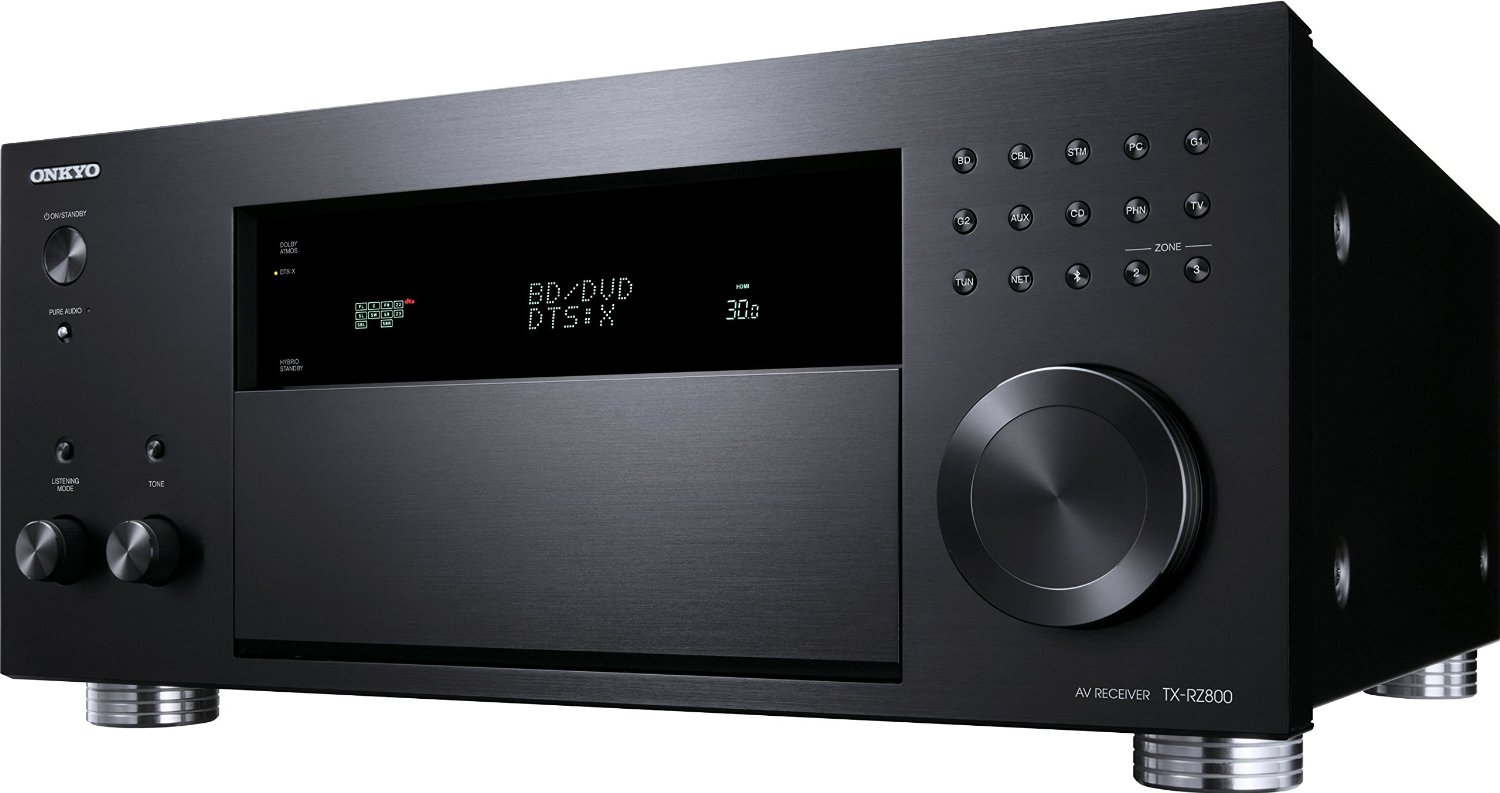
Sound Quality and Listening Experience
Apart from the obvious changes like the exterior design, the more interesting changes has been done to the interior. Onkyo has, as mentioned, used digital-to-analog converters from Texas Instruments for a long time, but have opted for the AKM AK4458 DAC from Asahi Kasei in the new RZ-line, and with the results from the TX-NR545 fresh in mind, our expectations are quite high.
Now, Onkyo has always been considered one of the big guns in the AV market, and their surround receivers and amplifiers, from budget-level to high-end, have won numerous awards and accolades throughout the years. This success is partly due to the wide variety of devices they offer, but also to the overall high performance quality of these devices. But, this does not mean that they´ve been perfect, and if there is one thing Onkyo has been struggling with recently, it would be that they lacked some subtlety - probably due to the preamp section. But it seems this struggle may be over...
With the new lower-end NR-series and the higher-end RZ-series Onkyo is stepping up their game, and it all starts with the preamp section and the 384 kHz / 32-bit AKM AK4458 digital-to-analog converter from Asahi Kasei, and ends with an improved power amp section, which according to Onkyo improves the bass reproduction and provide better control of the speakers.
The difference between the TX-RZ800 and the TX-NR838 may not be night and day, you can still hear it´s an Onkyo – but there is a difference. This is mainly thanks to the new preamp, and the improvement is mostly noticable in the highest and lowest frequencies, bringing an increased sense of accuracy, fluidity and a better and more defined sound image. More natural are the words that comes to mind.
A sense of space has always been one of Onkyo´s strongest qualities, so it is a bit surprising that the TX-RZ800 improves upon this even further. The sense of immersion is more or less spot on, and busy action scenes from favorites like ‘The Avengers‘ and ‘Star Wars‘ are rendered with precise localization of sound effects and an abundance of details in the background. The voice of the Machine talking to the blinded Neo in ‘The Matrix Revolutions‘ booms convincingly in each channel while the mechanical noises from the sentinels and the music adds to the drama, just as we suppose the Wachowski siblings intended.
The TX-RZ800 seem to have a firm grip on whatever it does, and the bass is both solid and deep, as we experienced when the monster rampaged through New York in ‘Cloverfield‘. Whatever we chose to throw at the Onkyo, it shrugged its shoulders and impressed us with its ability to handle anything without blinking. This is the amp to own if you love blockbuster movies.
The authoritarian control of the bass channel combined with ample amounts of dynamics and details is what makes it sound so fluid and cohesive, while still maintaining intelligibility, no matter what. On the other end of the spectrum you have precision and clarity, combined with explicit detail and resolution.
The power amplifiers are powerful enough to drive all but the most demanding speakers. This was also true about the TX-NR838, but the RZ800 has a slightly higher tolerance for speakers with low sensitivity and very low loads. It had no problems driving any of the speakers we used during testing.
How About Music?
Ok, so we established that Onkyo's new generation of amplifiers makes movies sound awesome - but how does these improvements translate when it comes to music? Most surround receivers mainly focuses on multi-channel audio like movies, but the majority of people want their newly purchased AV amp to be good at everything and don´t want to spend a lot of extra money on a separate system for listening to music. The TX-NR545 was a musically pleasant surprise, and hopefully an indication of what to expect from the RZ800. The fact that both uses the AK4458 DAC in the preamp section, a DAC known to provide transparency and musicality in some high-end audio equipment from other manufacturers - plus the fact that the RZ800 have a better and beefier power amp section than the 545 - should yield a more musical result compared to the TX-NR838, right?
To avoid too much coloration, we listened to music using the 'Pure Audio' and 'Direct' modes to disengage any unnecessary processing in the signal chain. We did of course play around with the various different sound modes to see what they do, but didn´t find them very useful for 2-channel music listening.
In short, the TX-RZ800 delivers a very consistent and large sound image with clarity and precision, especially in the higher frequencies. On some music tracks we occassionally experienced a slightly artificial 'shimmer' or 'sheen' to the top end, and this may be down to the recording, but thanks to the balanced and relaxed midrange and controlled bass, instruments and voices always sounded natural, nuanced and accurate with an overall sweetness to the sound.
Compared to a pure 2-channel amplifier in the same price range, the Onkyo obviously falls a bit short, but that is expected when you do that kind of comparison. Nonetheless, the TX-RZ800 plays music with confidence, and when you add stellar multi-channel audio in combination with great versatility, we can give it nothing less than two thumbs up.
Network and Multimedia
It handles Compressed, Lossless, and Hi-Res Audio via Local Network (MP3, WMA, WMA Lossless, FLAC, WAV, Ogg Vorbis, AAC, Apple Lossless, DSD 5.6 MHz, LPCM*4, and Dolby® TrueHD) without trouble, but unfortunately not FLAC 5.1 or WAV-DTS as it will be either down-mixed or not read at all. Onkyo is also currently the only manufacturer that makes amps compatible with NTFS (which lets you connect an external hard drive or a USB memory of more than 4 GB), especially in addition to uPnP playback and Bluetooth.
Also here the navigation menus are a bit too simple and crude and could do with an improvement. The album art looks nice though.
Streaming Music and Internet Radio
Of course you can still stream music using services like Spotify or Deezer, and by using the TuneIn Radio app you can access thousands of Internet radio stations and select them by country, style, quality and/or popularity, make lists of favorites, etc. Internet radio has its limitations though, and it can be tricky to find stations with higher bitrates.
Onkyo Remote Apps
The Onkyo Remote App for both Android and iOS operates wirelessly over the home network and offers a range of remote control functions to more easily manage your TX-RZ800. In addition, the app enables wireless audio streaming from your phone or tablet, online music service, NAS, and personal computer. The user can control playback across multiple zones as well as adjust most system settings from almost anywhere in the home. Furthermore, the application is compatible with Onkyo’s RI system, allowing control of multiple components within a system.
Conclusion
When Onkyo revealed their new range of AV Receivers and announced the promising changes they´d made, the home theater enthusiasts couldn´t help but feel very excited. After testing both the TX-NR545 and TX-RZ800, we can confirm that Onkyo not only lives up to the promise, but actually exceed it. Not only have they made it pretty to look at, they also raised the level of performance.
Onkyo have always made surround receivers of high quality, but the ever increasing demands from todays buyers means that you cannot rest on your laurels, and in this regard Onkyo has stepped up their game, mainly thanks to the improved preamp, not only improving the sound for movies but also by adding an extra dose of musicality. The TX-RZ800 is more of a 'statement' than a simple upgrade of the TX-NR838, and is definitely one of the references in the mid-range price segment. Well done, Onkyo!
GET IT ON eBay!
- FEATURES
- SPecIFICATIONS
| Amplifier | |
| # Channels | 7.2 |
| Power Watts/Ch (6 Ohms 1kHz, 1 Channel Driven, FTC) | 185, 0.9% THD |
| Power Watts/Ch (8 Ohms 20-20kHz, 2 Channels Driven, FTC) | 135, 0.08% THD |
| WRAT (Wide Range Amplifier Technology) | ✓ |
| H.C.P.S (High Current Power Supply) | ✓ (Massive High Power Transformer) |
| THX Certified | Select2 Plus |
| Continuous 6 Ohms Rated | ✓ |
| Certified 4 Ohms Performance | ✓ |
| Discrete Output Stage Circuitry | ✓ |
| 3-Stage Inverted Darlington Circuitry | ✓ |
| PUSH-PULL Design | ✓ |
| Independent Block Construction (Amp/Preprocessor) | ✓ |
| High-Grade Toroidal Transformer | - |
| Independent Power Supply | ✓ (x2) |
| Bi-amp Capability For Front | ✓ |
| Processing | |
| Dolby Atmos | ✓ |
| 32-Bit Digital Signal Processing Engine | ✓ |
| Dolby Decoder | Atmos, True HD, DD Plus |
| DTS:X | ✓ |
| DTS Decoder | DTS: X, DTS-HD Master Audio |
| ONKYO GAME Surround Modes | ✓ (Rock, Sports, Action, RPG) |
| VLSC for Noiseless Audio Processing | ✓ |
| THX Processing Mode | ✓ |
| AccuEQ Room Calibration | ✓ (Advanced) |
| Phase-Matching Bass Boost | ✓ (for Deep Bass and Clear Mid-Range) |
| Direct/Pure Mode | X / X |
| Pure Direct Analog Path Mode | ✓ |
| Advanced Music Optimizer | ✓ (Bluetooth Included) |
| 384K/32 Bit DACs | ✓ (Asahi Kasei AKM4458) |
| 192K/32 Bit DACs | - |
| 192K/24 Bit DACs | - |
| isf Certified Calibration Control | - |
| Connectivity | |
| Audio I/O | 9 / 0 |
| Phono Input | ✓ |
| Digital Audio IN (OPT/COAX) | 3 / 2 |
| Composite Video I/O | 3 / 1 |
| Component Video I/O | 2 / 1 |
| Front Panel HDMI | ✓ |
| Front-Panel A/V | - |
| Front-Panel Optical | - |
| USB Input | ✓ (Rear) |
| HDMI I/O | 8 / 2 |
| HDMI 4K/60 Hz- Capable HDMI Terminals | ✓ (HDR Support) |
| HDCP 2.2 Copy-Protection Compatibility | ✓ (5 in / 2 out) |
| HDMI Support for High Dynamic Range | ✓ |
| HDMI Support for 3D, Audio Return Channel and CEC | ✓ |
| HDMI Support for Deep Color, x.v.Color, LipSync | ✓ |
| HDMI Support for DVD-Audio, SACD, Multichannel PCM | ✓ |
| InstaPrevue Input Source Prevue | - |
| MHL for Mobile Device Connection | - |
| Composite to Component Video Upconversion | - |
| Analog To HDMI Upconversion | ✓ (from 480i/576i) |
| 1080p Upscaling | - |
| 4K (up to 4096 x 2160) Upscaling | - |
| 4K Passthrough | ✓ |
| Analog Pre-Outs | 7.2 |
| XLR Pre-outs | - |
| 18mm Pitch High Grade Pre-outs | - |
| Speaker A/+B | - |
| Powered Zone 2 | ✓ |
| Powered Zone 3 | - |
| Zone 2 Line Out | ✓ (Fixed/Variable) |
| Zone 2 Video Out | ✓ (HDMI) |
| Zone 2 Digital to Analog Audio Conversion | ✓ (HDMI, NET, USB) |
| Zone 3 Line Out | ✓ (Fixed) |
| Whole House Mode | ✓ |
| Made for iPod, iPhone, iPad | ✓ |
| Airplay | ✓ |
| Supports Onkyo Remote App | ✓ (iPod touch/iPhone and Android-Powered Devices) |
| Internet Radio Capable | ✓ (Pandora, Spotify, Sirius, Slacker, TuneIn, Deezer) |
| Spotify Connect Support | ✓ |
| Streaming Audio From PC / Network | ✓ (DLNA, Home Media) |
| Hi-Res Streaming Audio Formats | ✓ (Apple Lossless, DSD 2.8/5.6 MHz, Dolby TrueHD, FLAC 192/24, LPCM, Ogg Vorbis, WAV, WMA) |
| Streaming Audio From USB memory | ✓ |
| Wireless Network | ✓ (Wi-Fi-Certified) |
| Bluetooth | ✓ (Built-in) |
| PC Input (15 pin D-sub) | - |
| Integration Access | |
| RS-232 | ✓ |
| IR Input | ✓ |
| IR Output | - |
| Ethernet | ✓ |
| ONKYO-RI System Control | ✓ |
| RIHD (Remote Interactive Over HDMI) | ✓ |
| 12V Trigger | ✓ |
| Miscellaneous | |
| Pre-Pro/Learning Remote | - / ✓ |
| On Screen Remote Programming | ✓ |
| Hybrid Standby Function | ✓ (to Reduce Power Consumption) |
| Smart Grid-Ready | ✓ |
| Auto Speaker Calibration W/Mic. | ✓ (AccuEQ - Advanced) |
| OSD Out | ✓ (Advanced "Home" GUI) |
| Solid Aluminum Front | ✓ |
| Transparent High-Grade Speaker Terminals | - |
| Detachable AC Cord | ✓ |
| Warranty | 2 YEARS |

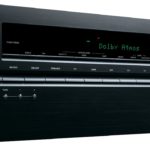
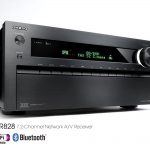
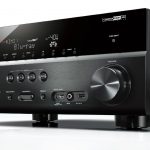
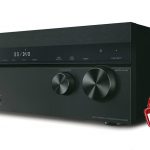
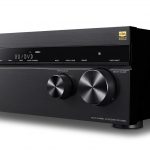
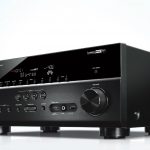
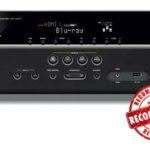

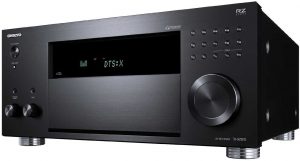


Leave a Reply